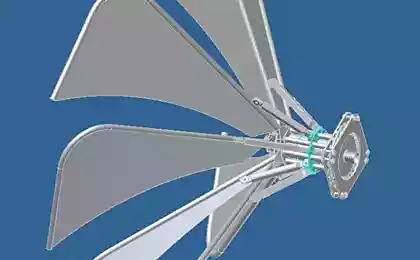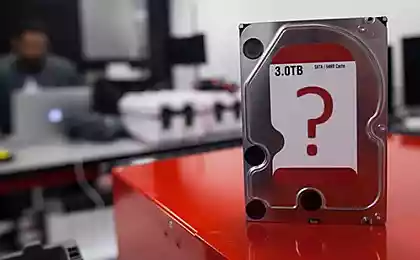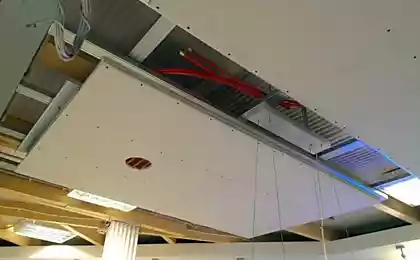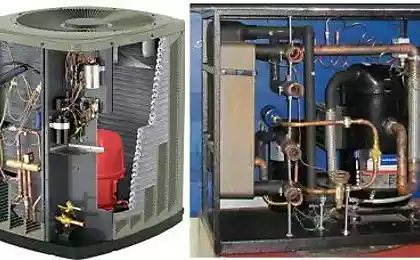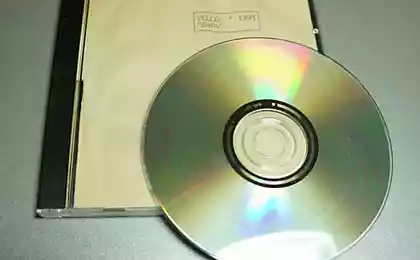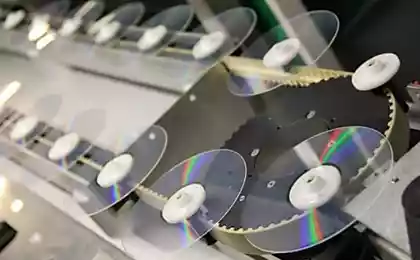520
Fan without blades
Traditional design ceiling fan are well known. Usually it is the blades with a whistle cut the air under the ceiling of the room, directing the air flow down. Being right under the fan, you can enjoy the "breeze" and risk catching a cold at the same time. But in other parts of the room the effect of flow is almost imperceptible.
Inventor Nik Hiner (Nik Hiner), along with associates from Exhale Fans, the company offers a product devoid of these drawbacks and which has an unusual innovative design.
In the new design all set "up". No, the fan is still mounted under the ceiling of the room, but he had no whistling above the head of the blades, and the air flow it blows out and sucks.

Instead of the blades spinning flat disk, creating a laminar (unidirectional) air flow moving along the surface of the ceiling and falling down to the floor along the walls of the room. As a result, the air entering the fan at the bottom, circulates evenly throughout the room, mixing the temperature layers. Unlike conventional bladed fan in the room, fully covered by laminar flow, eliminate zone, the temperature of which are significantly different from the mean value.
In construction there are no rotating blades, which determines the fundamentally lower noise level during operation. In addition, for the rotation of the circles uses low-noise motor, which reduces the overall noise level to a minimum. DC motor can rotate with six different speeds and is controlled by a wireless remote control. Of course, a distinct advantage and difference between the new fan blade from the fellow's appearance, which perfectly fits with almost any decor.
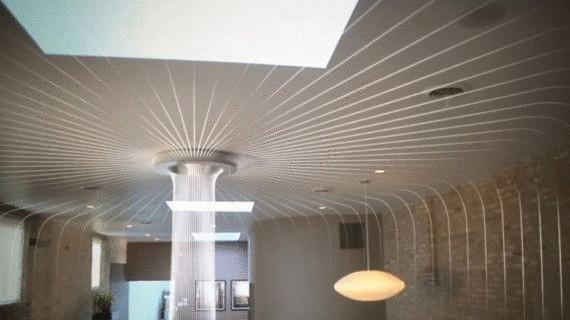
The idea of a bladeless ceiling fan came up with the Hiner when he studied the design of the turbine Nikola Tesla. The first attempt of realization of unusual design Hiner made in 2005. The following years were spent for the adaptation of the design and production of a series of prototypes, before the inventor settled on the current design.
Today, the fan is almost ready for production. To run it requires a certain amount Hiner plans to spend on development of packaging and raw material purchase.
Source: /users/104
Inventor Nik Hiner (Nik Hiner), along with associates from Exhale Fans, the company offers a product devoid of these drawbacks and which has an unusual innovative design.
In the new design all set "up". No, the fan is still mounted under the ceiling of the room, but he had no whistling above the head of the blades, and the air flow it blows out and sucks.

Instead of the blades spinning flat disk, creating a laminar (unidirectional) air flow moving along the surface of the ceiling and falling down to the floor along the walls of the room. As a result, the air entering the fan at the bottom, circulates evenly throughout the room, mixing the temperature layers. Unlike conventional bladed fan in the room, fully covered by laminar flow, eliminate zone, the temperature of which are significantly different from the mean value.
In construction there are no rotating blades, which determines the fundamentally lower noise level during operation. In addition, for the rotation of the circles uses low-noise motor, which reduces the overall noise level to a minimum. DC motor can rotate with six different speeds and is controlled by a wireless remote control. Of course, a distinct advantage and difference between the new fan blade from the fellow's appearance, which perfectly fits with almost any decor.

The idea of a bladeless ceiling fan came up with the Hiner when he studied the design of the turbine Nikola Tesla. The first attempt of realization of unusual design Hiner made in 2005. The following years were spent for the adaptation of the design and production of a series of prototypes, before the inventor settled on the current design.
Today, the fan is almost ready for production. To run it requires a certain amount Hiner plans to spend on development of packaging and raw material purchase.
Source: /users/104
